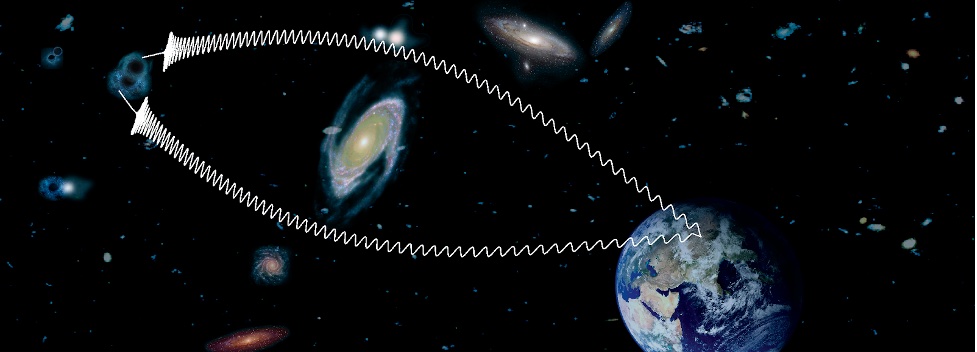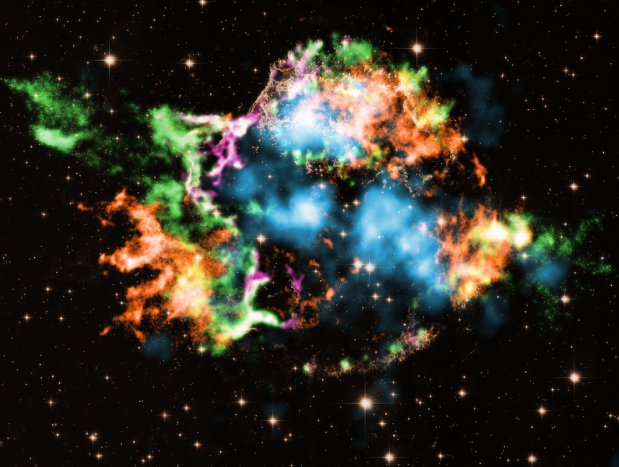Gravitational waves don’t travel through space and time. They are ripples in the fabric of spacetime itself. This is why they are so difficult to detect. We can only observe them by closely watching how objects bent and stretched within spacetime. But despite their oddness, gravitational waves behave in many of the same ways as light, and astronomers can use that fact to study cosmic expansion.

As with light, gravitational waves ripple along at a constant finite speed. The same speed as light. So gravitational waves are affected by large-scale gravitational deformations just as light is. Gravitational waves can be deflected as they pass near a galaxy or massive star, and can be gravitationally lensed just like light. The difference is that, unlike light, gravitational waves aren’t absorbed or scattered by matter. They are only affected by the gravitational structure of spacetime. This means we should be able to see lensed gravitational waves even more clearly than lensed light waves.
This is the idea behind a new study in Physical Review Letters. The paper starts by noting that when the third generation of gravitational wave observatories comes online, astronomers will be able to detect hundreds of black hole and neutron star mergers in distant galaxies. Based on what we know from optical observations, about 1% of these mergers will be gravitationally lensed by a closer galaxy between us and the merger. Since this magnifies the strength of both light and gravitational waves, lensed events allow astronomers to see deeper into the universe than they would otherwise.

These lensed gravitational wave events could then be used to measure the rate of cosmic expansion. There are several ways to measure cosmic expansion, from supernovae to astrophysical masers, but one of the big mysteries of cosmology is that these different methods sometimes give contradictory results. It’s known as Hubble tension, and it means that while we know basically how fast the universe expands, we can’t pin it down precisely.
The authors note that black hole mergers could be used to measure cosmic expansion. The energy released by black hole mergers depends on the initial masses of the black holes and the rate of their merging. Since these properties can be measured by a gravitational observatory, they can serve as a “standard candle” for distance measurement. If you know how bright an event actually is, you can compare it to how bright it appears to you to calculate the distance. Lensed merger events take this even further. Since lensing can give us multiple views of the event from slightly different directions, it would allow astronomers to measure the distance and energy of the events very precisely, thus allowing them to pin down the rate of cosmic expansion.

Because this method would only depend on gravitationally lensed ripples of spacetime in spacetime, it would be a direct measurement of cosmic structure and a direct measure of cosmic expansion. It has the potential to resolve the Hubble tension problem for cosmology.
